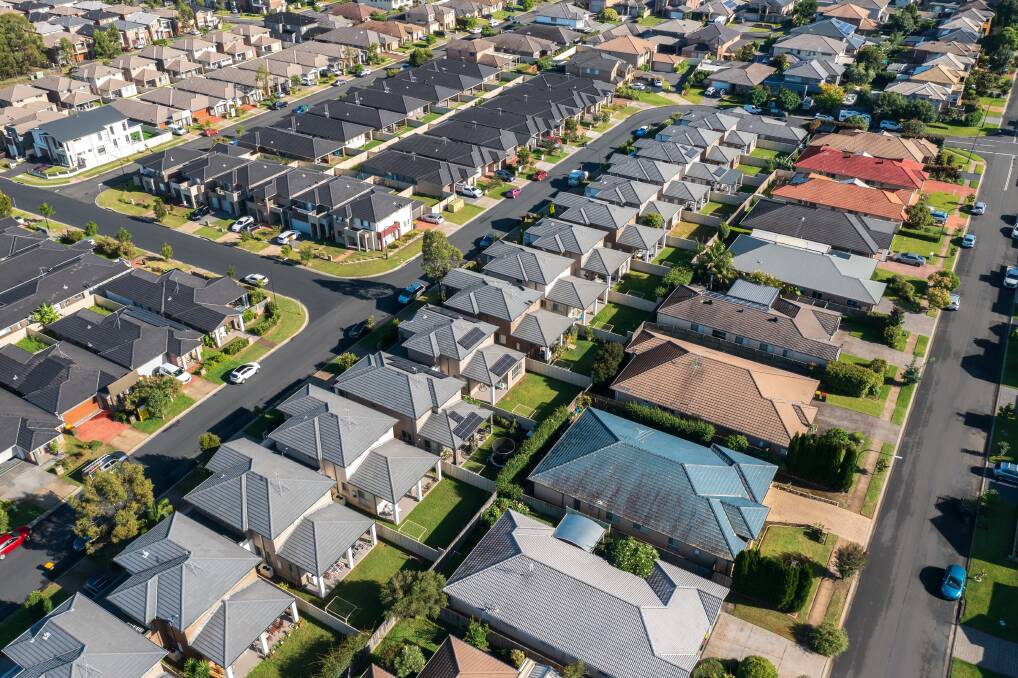Federal Government's 1.2 million housing pledge predicted to face labour shortage

This is branded content.
In Australia, construction is a part of life - from articles bemoaning the projects of developers, union negotiations, and political parties painting workers as heroes or villains, you often can't open a newspaper without reading some form of construction news.
You can see it in our skylines as well - whether in a car, train, or plane, travelling into a city and seeing cranes in Australia is always an awe-inspiring sight. Construction is visibly imprinted on the cityscape of almost every Australian capital.
In a nation where population growth is rapidly driving demand in the housing sector, the construction sector has new goals - a recent National Housing Accord has set a goal of developing 1.2 million new homes in the next five years. With the construction market experiencing labour shortages, how realistic is this goal - and what can be done to get Australia closer to its housing targets?
The current state of housing
Australia has a housing shortage. In recent years, as a result of increased immigration and stagnation in property development, there has been increased pressure within both the residential rental and sales sectors.
In economic terms, a supply/demand equation describes the impact that changes have on pricing. Take, for example, a product like bottled water - during natural disasters, demand typically skyrockets as supply is hampered, whether it be through a polluted water supply or other obstacles.
A similar effect can be seen in the current state of Australia's rental market. For many Aussies, renting is a part of life - and when a lease expires, new accommodation has to be found. With an increase in migration, and a lack of new properties on the market, there are significantly more people looking for rentals - and as a result, this demand drives increases in rental prices, forming a vicious cycle that impacts housing affordability.
The leading advocate body, the Australian Council of Social Service, notes that the impact on housing affordability has been particularly dire. In research conducted in 2022, ACOSS's research found that rents had risen at triple the rate of wages in some parts of the country. The research highlighted that housing reform was desperately needed - and steps needed to be taken to address shortages in the property market.
A lofty goal - The national housing accord
In response to pressure from social service advocates, the broader public, and leaders in the construction sector, state and territory governments came together throughout 2022 to develop a National Housing Accord - an aspirational initiative to tackle the issues impacting the supply and affordability of housing.
Recognising that secure, decent housing is not simply a big ticket item, but rather a fundamental human right, the Accord aspires to tackle the challenges that currently permeate the housing construction sector.
The Accord tackles not only construction - but also legislative and regulative items that might present themselves as obstacles when building a property. They include the expedition of zoning and release of land for social housing, as well as planning reform, and the construction of 20,000 affordable new homes.
The challenge - shortages
While the Accord is aspirational, there are a range of challenges that face it. Take, for example, recent data from the Australian Bureau of Statistics around dwelling commencement and completion - with about 38,000 dwellings commenced and 43,000 dwellings completed in the quarter ending December 2023.
It would take an uplift of approximately 58 per cent in commencements and 40 per cent in completions to reach a quarterly target of 60,000 completions per quarter - the average required to meet the Accord's targets.
This, combined with existing labour shortages in the housing sector, as documented by BuildSkills Australia, makes it evident that to reach the Accord's targets, significant investment will be required to train enough tradespeople to reach the required construction targets.
Ultimately, this challenge is not unique to Australia. Many nations around the world are experiencing staff shortages in the construction sector - from North America to Europe, nations are experiencing an unprecedented skills shortage in the construction sector.
Can the accord be achieved?
With the significant challenges that are present in resolving the construction supply and demand challenges in Australia, one must ask - is the National Housing Accord achievable, or is it simply an idea on a piece of paper?
While it can be hard to predict the future, there are clear indications governments need to do more than speak about construction issues and write ideas in documents. By working together, industry and government can make a substantial difference in the lives of ordinary Aussies.
With action on housing being almost certain to be tied to the Albanese Government's political fortunes, it appears additional issues need to be addressed to achieve the goals of the Accord. It will likely need to be done with substantial innovation in the construction sector - whether it be advancements in production, new technologies such as concrete printing, or the reimagining of existing spaces - rather than traditional strategies which have done little to shift the dial significantly.


